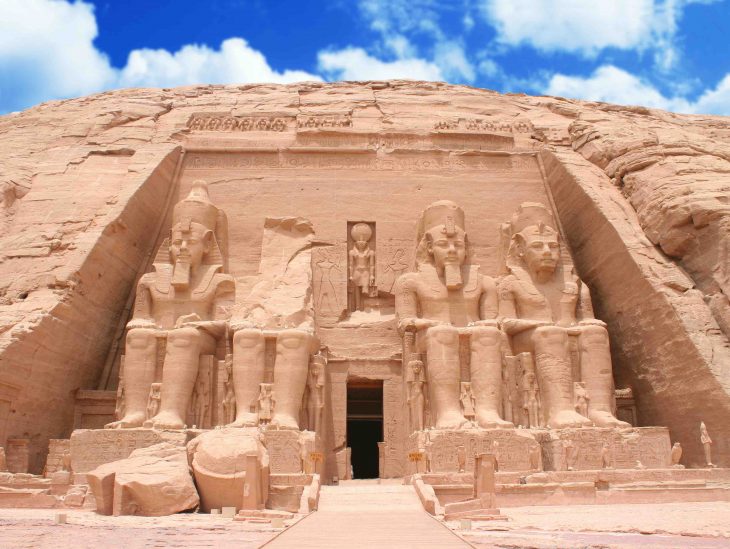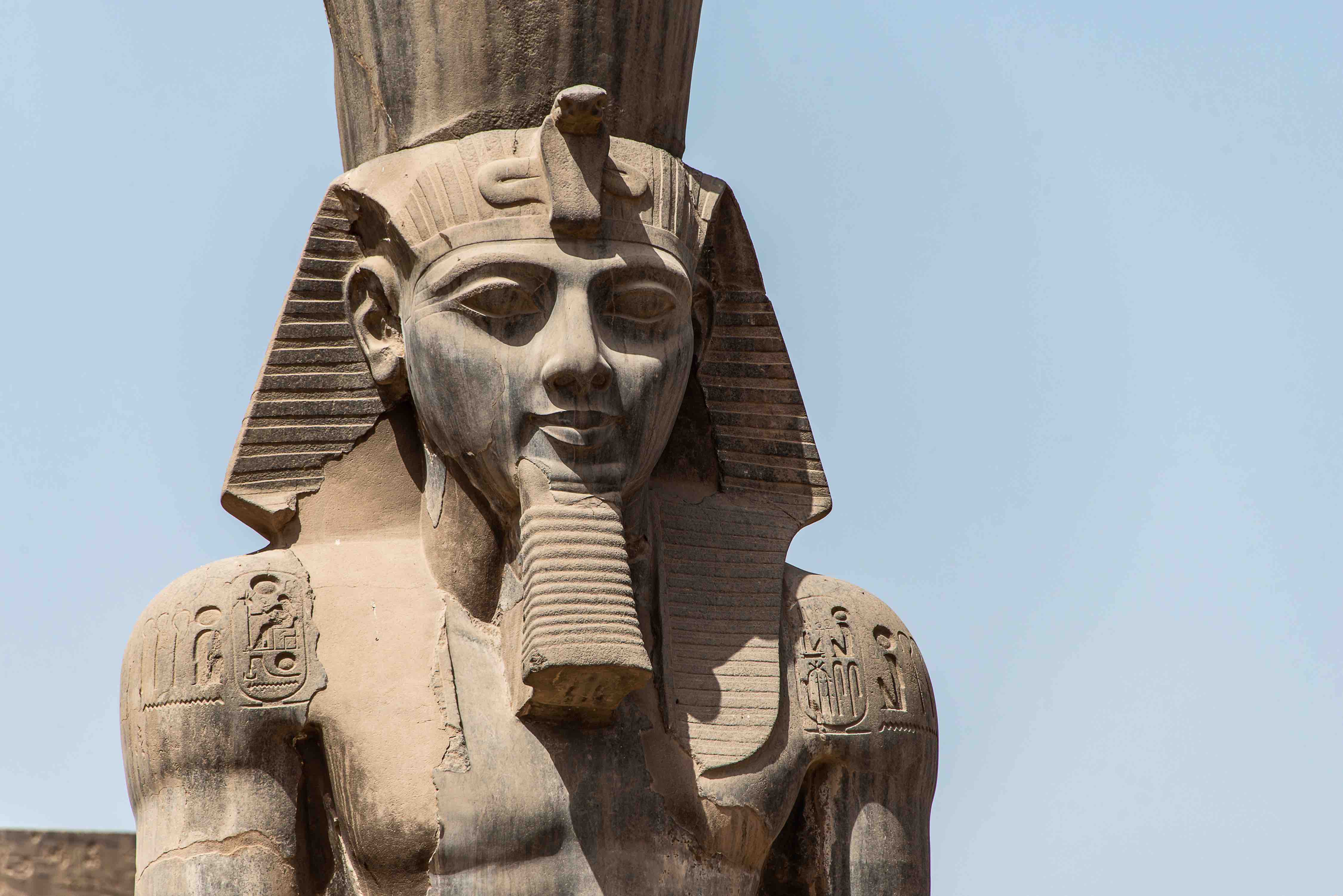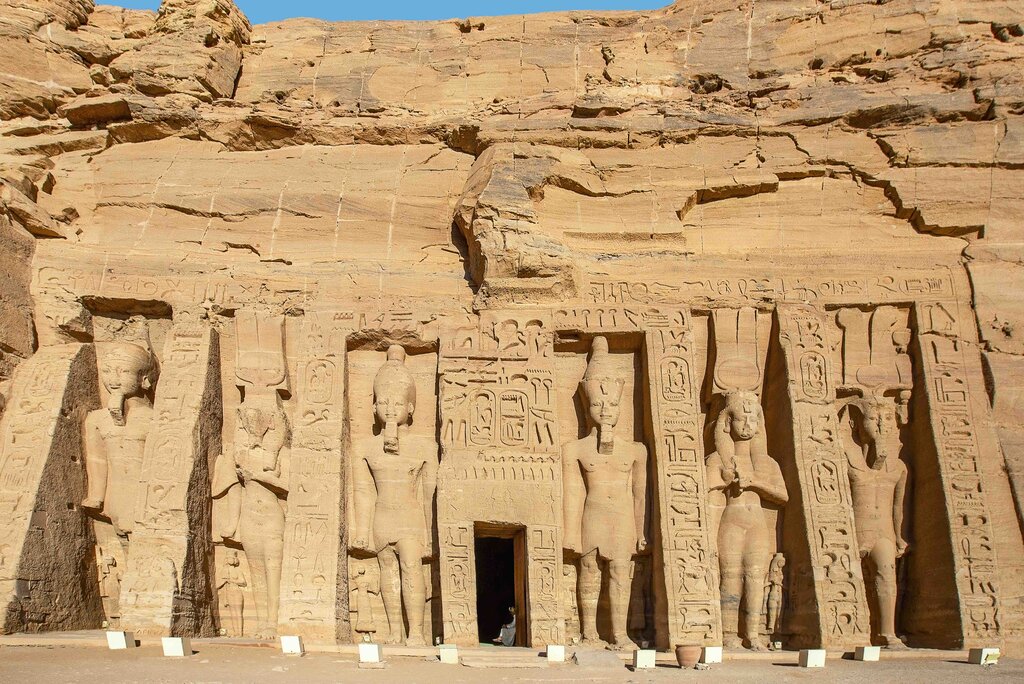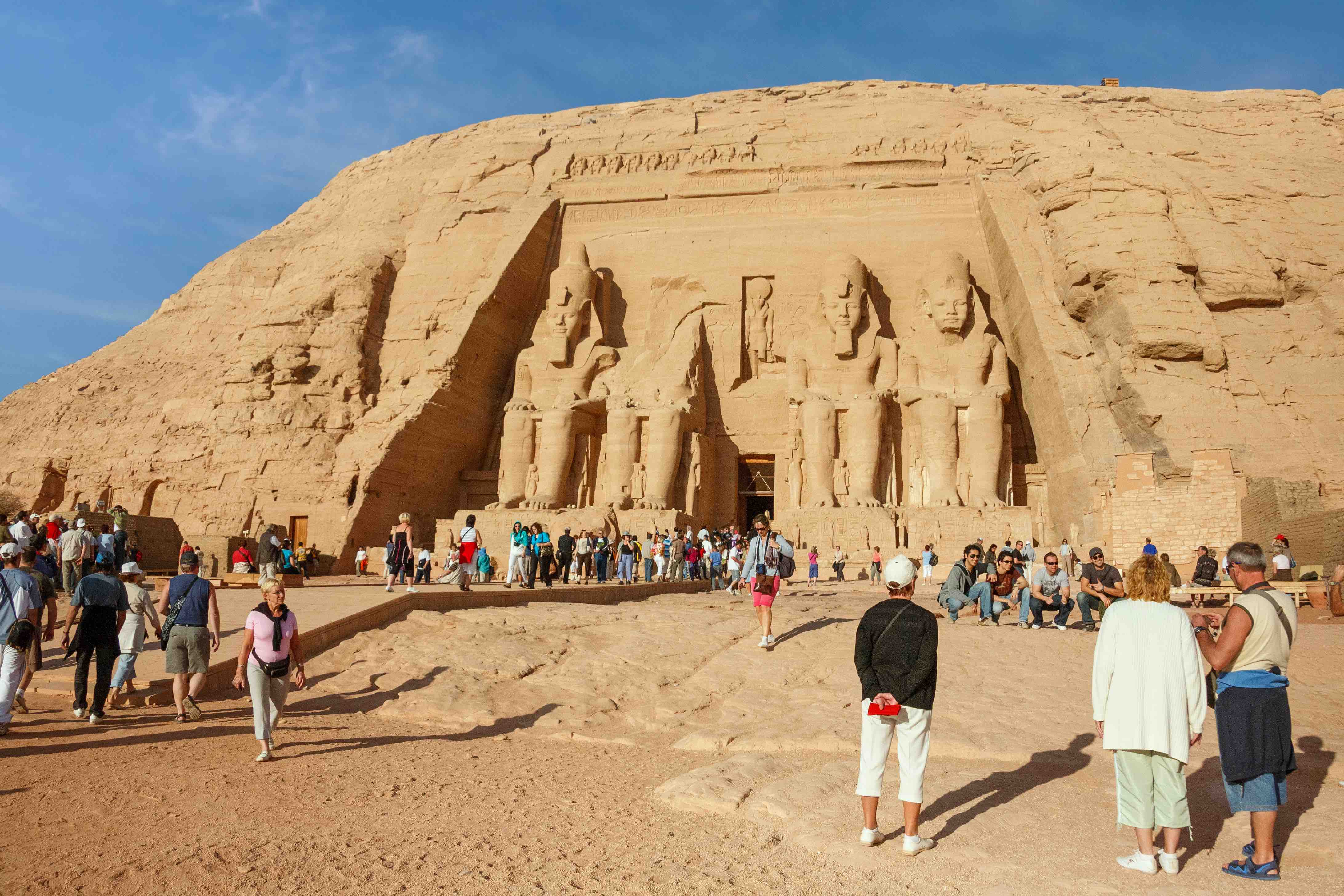
Welcome to an extraordinary journey through time as we uncover 18 fascinating facts about Abu Simbel, one of the most magnificent archaeological sites in Egypt. Situated on the banks of the Nile River, Abu Simbel is a testament to the grandeur and engineering prowess of ancient Egyptian civilization. From towering temples to intricate carvings, this UNESCO World Heritage Site captivates visitors with its awe-inspiring beauty and rich historical significance.
The Marvelous Temples of Abu Simbel
Abu Simbel is home to two awe-inspiring temples: the Great Temple of Ramses II and the smaller Temple of Hathor and Nefertari. These colossal structures were carved out of sandstone cliffs during the reign of Ramses II in the 13th century BCE.
UNESCO’s Herculean Relocation Effort
In a remarkable feat of engineering and preservation, the Abu Simbel temples were relocated in the 1960s to avoid submersion under Lake Nasser. This massive endeavor involved dismantling and reassembling the temples on higher ground, ensuring their protection for future generations.
A Tribute to Pharaoh Ramses II
The Great Temple of Ramses II at Abu Simbel is dedicated to Pharaoh Ramses II, also known as Ramses the Great. This temple serves as a testament to his power and military achievements, featuring colossal statues of the pharaoh himself.

The Sun Festival: A Spectacle of Light
Twice a year, on February 22nd and October 22nd, the Sun Festival takes place at Abu Simbel. During these dates, sunlight penetrates the temple’s inner sanctuary, illuminating the statue of Ramses II, while the statue of Ptah, the god of darkness, remains in shadows—an awe-inspiring spectacle symbolizing the pharaoh’s divine connection.
A Sanctuary for the Goddess Hathor
The smaller Temple of Hathor and Nefertari is dedicated to the goddess Hathor, the deity of love, beauty, and joy, and Nefertari, Ramses II’s beloved wife. This temple showcases intricate carvings and depicts Ramses II and Nefertari in a harmonious union.
The Abu Simbel Sphinxes
A row of majestic sphinx statues lines the approach to the Great Temple of Ramses II. These imposing half-lion, half-human sculptures symbolize strength and guardianship, welcoming visitors to the grandeur that lies beyond.
The Mystery of the Colossal Statues
The four colossal statues of Ramses II, each standing at a staggering height of 20 meters, flank the entrance of the Great Temple. These massive figures are a testament to the pharaoh’s might and authority, leaving visitors in awe of their sheer size and craftsmanship.
The Inner Sanctuaries
Venturing inside the temples reveals intricately decorated chambers and sanctuaries. The walls are adorned with hieroglyphs and vivid reliefs that narrate stories of ancient Egyptian mythology, offering a glimpse into the religious beliefs and rituals of the time.

The Osiris Chapel
Within the Great Temple, the Osiris Chapel pays homage to Osiris, the god of the afterlife and rebirth. This sacred space adds a spiritual dimension to the temple complex and invites contemplation and reflection.
The Nubian Monuments Preservation Campaign
The relocation of Abu Simbel was part of the Nubian Monuments Preservation Campaign, an international effort to safeguard the cultural heritage of the Nubian region. This initiative aimed to protect numerous ancient sites that would have been lost due to the construction of the Aswan High Dam.
A Journey Through Hieroglyphs
The walls of Abu Simbel’s temples are adorned with detailed hieroglyphic inscriptions. These intricate symbols served as a written language for the ancient Egyptians, conveying stories, rituals, and historical accounts that continue to intrigue scholars and visitors alike.
The Symbolism of Statues
Statues played a significant role in ancient Egyptian religious practices. At Abu Simbel, the statues of gods, pharaohs, and other revered figures were believed to house the spirit or essence of the depicted deity, allowing for a direct connection with the divine.

The Astronomical Alignment
The alignment of the Abu Simbel temples was carefully calculated to align with astronomical events. The Sun Festival mentioned earlier, is a remarkable example of this precision, showcasing the ancient Egyptians’ understanding of celestial movements and their integration into religious practices.
The Sound and Light Show
Experience the magic of Abu Simbel after dark with the captivating Sound and Light Show. Through a combination of narration, music, and illuminated projections, the show brings the temples to life, recounting the history and legends associated with this extraordinary site.
A Gateway to Ancient Nubia
Abu Simbel served as a significant gateway between ancient Egypt and Nubia, a region that spanned parts of present-day Sudan and southern Egypt. The temples’ location near the border helped solidify the relationship between these two civilizations, fostering trade and cultural exchanges.
Abu Simbel’s Role in Egyptian Tourism
Since its relocation and preservation, Abu Simbel has become a must-visit destination for travelers exploring the wonders of ancient Egypt. Its cultural and historical significance, coupled with its breathtaking beauty, make it a UNESCO-recognized site that continues to inspire and captivate visitors from around the world.

Abu Simbel’s Influence on Pop Culture
The grandeur and mystique of Abu Simbel have not gone unnoticed in popular culture. Its majestic temples have been featured in films, books, and even video games, leaving an indelible mark on the collective imagination and further igniting curiosity about ancient Egypt.
Continuing Discoveries at Abu Simbel
Despite centuries of exploration, Abu Simbel continues to unveil new insights and discoveries. Ongoing archaeological research sheds light on the lives of the ancient Egyptians and the intricate details of their religious and cultural practices, ensuring that Abu Simbel remains a site of endless fascination and wonder.
Final Thoughts
Abu Simbel is a testament to the ingenuity, artistic prowess, and spiritual beliefs of ancient Egypt. Explore this awe-inspiring site, immerse yourself in its history, and let the grandeur of Abu Simbel transport you to a bygone era. Marvel at the architectural marvels, decipher ancient hieroglyphs and witness the legacy of ancient Egypt come to life before your eyes. Abu Simbel awaits, ready to transport you to a world of ancient splendor and mystery.
Frequently Asked Questions (FAQ)
Can you enter the inner chambers of the Abu Simbel temples?
Yes, visitors are allowed to enter the inner chambers of the temples and explore their intricate details and stunning artwork.
How long did it take to relocate Abu Simbel?
The relocation of Abu Simbel took approximately four years, from 1964 to 1968.
Is photography allowed inside the Abu Simbel temples?
Photography is allowed inside the temples, but the use of flash is generally prohibited to preserve ancient artwork.
How can I reach Abu Simbel?
Abu Simbel can be reached by air or by joining a guided tour from Aswan. The nearest airport is the Abu Simbel Airport, which has regular flights from Cairo.
Are there any other attractions near Abu Simbel?
Yes, Lake Nasser, formed by the construction of the Aswan High Dam, offers opportunities for cruises and fishing trips. Additionally, the nearby Temple of Kalabsha and the Nubian Museum in Aswan are worth visiting to further explore the region’s history and culture.
Was this page helpful?
Our commitment to delivering trustworthy and engaging content is at the heart of what we do. Each fact on our site is contributed by real users like you, bringing a wealth of diverse insights and information. To ensure the highest standards of accuracy and reliability, our dedicated editors meticulously review each submission. This process guarantees that the facts we share are not only fascinating but also credible. Trust in our commitment to quality and authenticity as you explore and learn with us.
